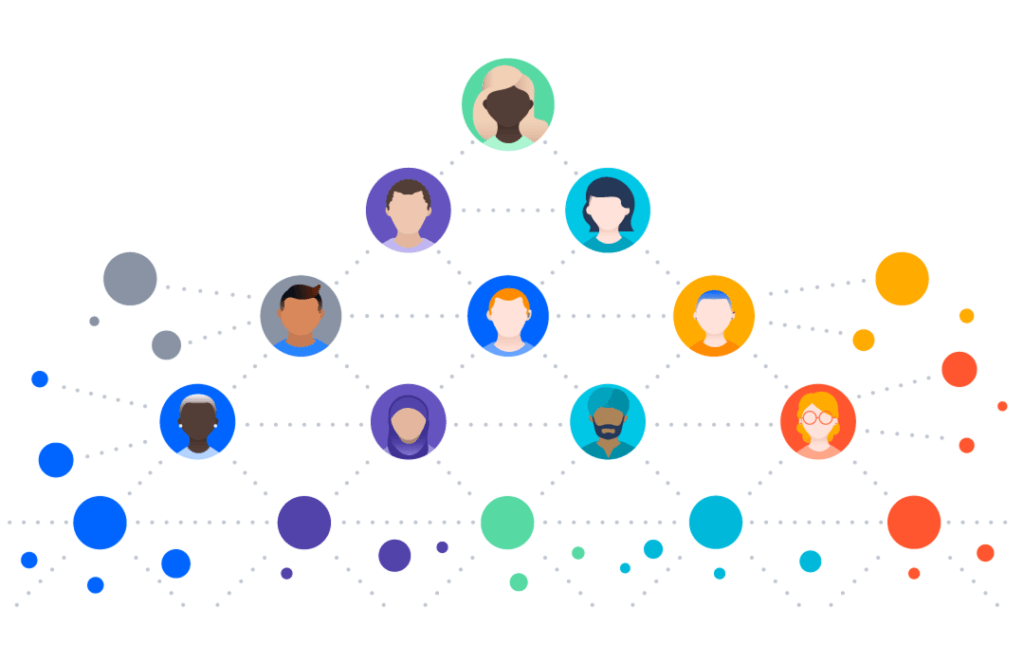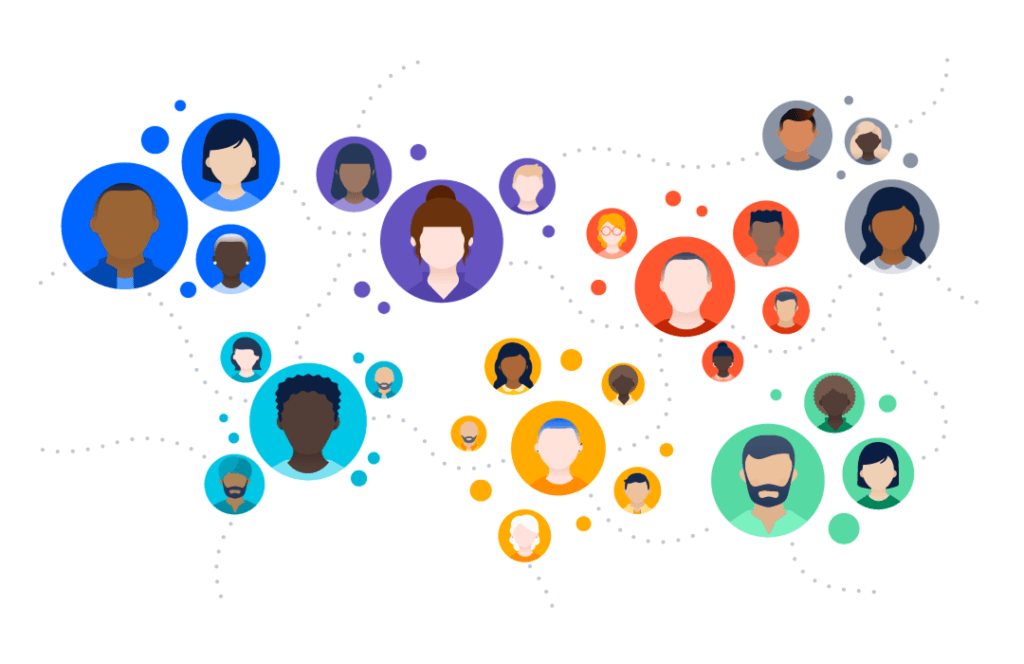3 Workplace Trends Atlassian Are Acting On Today
)
There are a lot of views out there on what the future of work will look like – depending on who you ask the bots are either coming to take our jobs or save us. It's hard to know which ones you should sit up and take notice of. Who better to ask than one of the greatest tech success stories, Atlassian. Now a multi-billion dollar enterprise, a large part of their success has come down to staying ahead of the curve – whether that be in tech innovation or their workplace collaboration and engagement strategy. They have consistently innovated in unexpected ways and hung their competition out to dry.
In this article, Head of R&D and Futurist, Dominic Price, shares some key workplace trends that Atlassian are taking note of and details how their teams are re-shaping their processes to adapt accordingly. Dominic will also be going in depth into How Atlassian Are Preparing for the Future of Work at HR Innovation & Tech Fest in July.
This is What the Future of Work in the Enterprise Looks Like
If you work in an enterprise-scale organisation, you've no doubt dreamt about the potential your organisation would have if your teams worked together as well as the gears in a Formula 1 car. To be honest, this is what keeps Atlassians up at night too: trying to figure out how to get that optimal outcome with so many other factors and influences butting in.
Tools need to adapt to the way people are working, so teams can get the right work done at the right time. To do this we focus on the trends (yes there are a lot) that are affecting teams so we can better understand what the future of work looks like. Don't worry, you don't have to duplicate our efforts. We're here to share with you trends and insights so you can unleash the full potential of your teams.
1. Be a Network, Not a Ladder
We are living amidst the fourth industrial revolution, enterprises are influenced by a multitude of trends and are becoming more digitally inundated by the day. With this comes a growing imperative for organisations to redesign themselves to move faster, adapt and thrive. The only effective way to respond to these trends is to change the way we work and start operating in a fundamentally new way.
To do so, organisations need to focus on their people, practices, and tools they are using to shape how teams work together. The bottom line is this: stop focusing on efficiency and start focusing on effectiveness.
There's a good chance your organisation has bureaucratic tendencies. Bureaucracy was a product of its time, that fit the trend of its time (think slow-moving fax machines and high barriers to entry). But now organisations need to be built around speed, agility, and adaptability.
This is only done by breaking the hierarchical ladder of bureaucracy and embracing a network of teams. With so much talent sitting ripe in organisations we should be empowering workers and engaging them, not blocking them with silos and concentrated power. In a recent Deloitte study, only 14% of executives believe the traditional org model – with hierarchical job levels based on expertise in a specific area – made their organisation highly effective.
How things were…
 How things are now…
How things are now…

So stop looking at an org chart as a linear map of seniority, and start looking left and right. Use it as a menu to develop a more flexible an effective team-centric model. Atlassians like to think of our company as a team of teams that is continually evolving and forming depending on our goals.
With this model, team interaction is more organic and natural. Knowledge transfer and shared practices become second nature and teams become more interconnected, transparent and effective than ever before. Additionally, teams can be assembled and dismantled on the fly depending on projects and demand. It is within teams where the real work actually gets done.
We see top companies built around systems to encourage this. ANZ Bank, one of the oldest and largest in Australia is a great example of an organisation that has put these trends into practice. They standardised using Atlassian tools such as Jira and Confluence, innovating and changing the way 50,000 employees work and think, fundamentally shifting the way work was done en masse.
2. Who is Accountable?
Implementing an adaptable team of teams structure means that organisations need to build in accountability. One way to do this is to create a culture of openness and transparency by sharing individual and team goals. Some enterprise organisations have built real-time dashboards to measure progress on metrics like customer acquisition, customer satisfaction, hiring and employee retention, and shared these dashboards throughout their organisation.
Atlassian embraced the OKR (Objectives & Key Results) model for goal-setting where each department and team set goals that ladder up to our company-wide goals, and we've been using it successfully for several years now.
Monthly, we document our progress and status (in Confluence of course) and share, keeping visibility and accountability high. The OKR model also keeps us effective by ensuring we focus on the right things: outcomes (are we driving impact? being effective? measuring customer success?) rather than focusing on outputs (how busy we are, did we ship or not). Unless something can be tied to a business objective or results, it's a vanity metric that might look good internally but is not driving real value.
3. The Future of the World is Automated
In case you've missed it, the robots have arrived and they're taking our jobs. Don't panic, though: they're only taking away the repetitive, mundane tasks – for now, at least. This is great news for companies and individuals. As automation frees up our time and cognitive load, we're better positioned to take on more complex (and interesting) work. As a team, you can be more effective and add more value without adding more members.
Atlassian relies heavily on this concept. Teams from IT to HR to legal to design act like service teams and use a service desk to maximize productivity. This makes it much simpler for all of us to find the information we need or direct questions and requests to the right team. VMware puts this into practice at scale. Their site reliability engineering team has solved operational problems like SLA breaches with well-defined automation processes in Jira Service Desk, which is used by 3,000 of their engineers daily.
But there's a catch. As automation is introduced, you have to evolve your practices in order to get real value out of the additional time on your hands. This might mean going deeper into strategic planning and getting individual contributors involved (they're the ones closest to the work, after all). It might mean building exploratory “spikesâ€' into your routine. And if you're savvy, it'll mean investing in the health of your team by regularly reflecting on how you're working together and giving yourselves the bandwidth to make the right changes.
You can hear more from Dominic Price at HR Innovation & Tech Fest, 29-30 July 2019, Auckland New Zealand – here's a look at Dominic in action.
Â
Prepare for the Future, Starting Today
Surprise surprise, the decision-making process is also shifting, and it is moving to those closest to the problem. This is happening through the use of goals and the relinquishing of control by leadership – more of a don't tell people how to do things, but rather give guidance on what to do and let them surprise you with their results.
If we are enabling teams to flourish through breaking down silos and encouraging transparency, shouldn't they have a say in the decision process? After all, they are the ones closest to the work and problems. Therefore, when organisations function as a team of teams, decisions need to be made within all levels of teams. While many leadership teams still drive strategic business-level decisions, we're seeing more and more organisations allow their teams to reach their own decisions on projects and tasks, while keeping stakeholders (and leadership) informed.
We understand there are a lot of shifts and changes happening, and that is why we created a resource to help you: the Atlassian Team Playbook. The Playbook has step-by-step instructions for new ways of working, addressing and including many of the trends we discussed. In the same way our tools connect your people to their work, the Team Playbook connects people to each other and to better collaboration techniques.

The best way to get ahead of future changes is to keep a keen eye on trends and build flexibility into your organisation. Trends evolve and shift, therefore your enterprises should too. As both Abraham Lincoln and Peter Drucker said, “the best way to predict the future is to create it,â€' so don't be a bystander.
Be a positive role model and be the change you seek in your teams and organisation, and build the future you desire.
You can hear more from Dominic Price and other leading HR innovators at HR Innovation & Tech Fest, 29-30 July 2019, Auckland New Zealand
About the Author

Dominic Price is Head of R&D and Work Futurist at Atlassian. With responsibilities spanning 5 global R&D centres, he is also the in-house “Team Doctorâ€', helping Atlassian scale by being ruthlessly efficient and effective, with one eye on the future. Dom helped pioneer the Team Playbook and has personally run hundreds of sessions with teams globally. Previously, Dom was GM of Program Management for a global gaming company and a Director of Deloitte providing assurance and consulting services.
.png)
